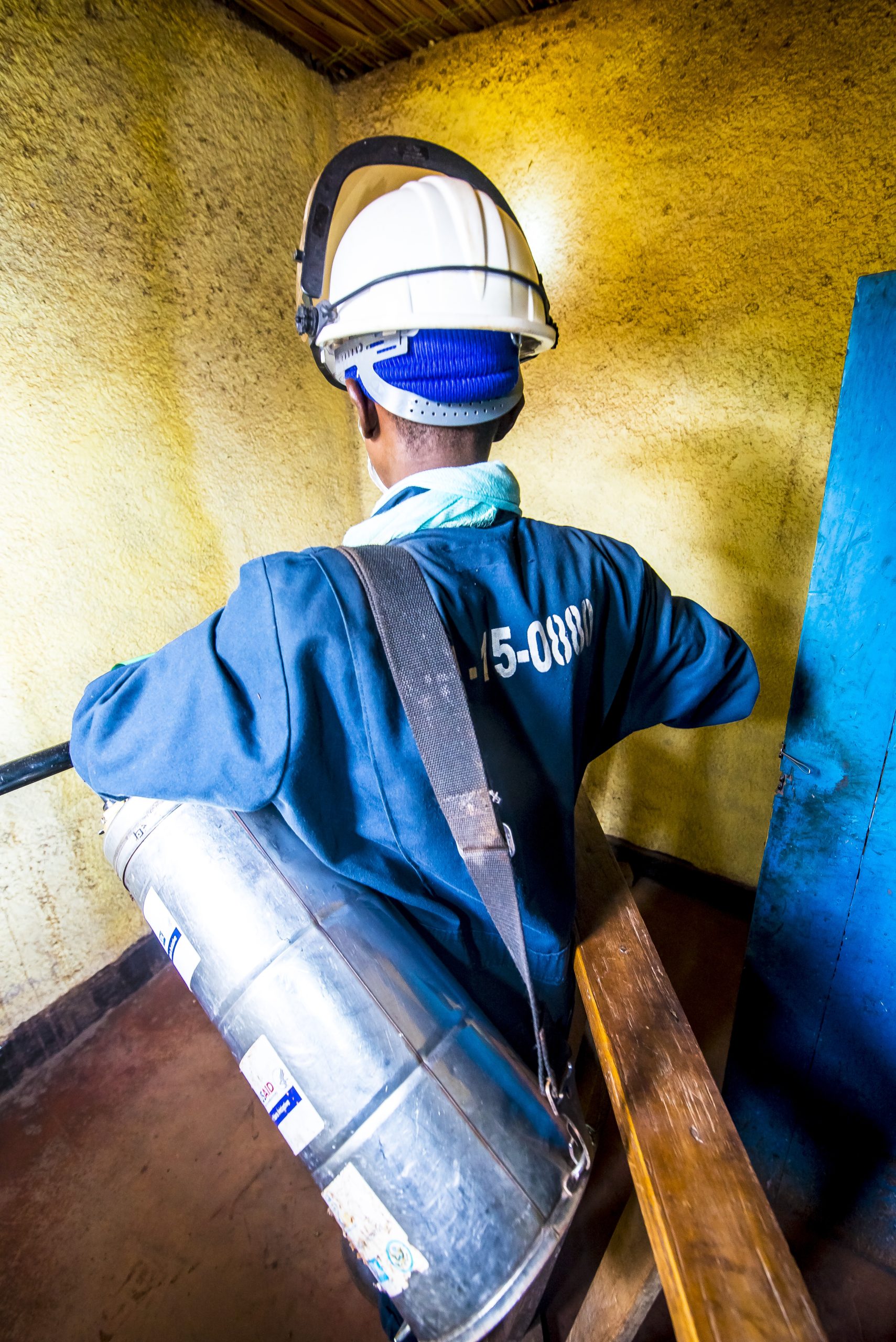Indoor residual spraying (IRS)
Indoor Residual Spraying (IRS) remains a cornerstone of malaria vector control, providing months of protection by coating indoor surfaces with residual insecticide.
Over the past 20 years, IVCC has partnered with industry leaders and global stakeholders to develop and introduce six IRS products with different modes of action.
However, the rise of insecticide resistance poses a challenge to its long-term efficacy. To ensure IRS remains a viable intervention, IVCC works to maintain a minimum of three non-pyrethroid modes of action for IRS, supporting sustainable insecticide rotation strategies.
Our efforts have helped expand access to cost-effective, long-lasting IRS formulations, supporting countries in implementing resistance management strategies while improving affordability and impact.
Our goal is to maintain the relevance of IRS as a tailored vector control intervention and help maintain a minimum of three different, non-pyrethroid, modes of action for IRS that are effective against resistant mosquitoes.
Despite its proven effectiveness, IRS faces growing constraints due to high costs, operational challenges, and shrinking budgets. The reduced use of IRS threatens elimination efforts in areas where targeted spraying remains essential.
To address this, IVCC is working on market-shaping interventions, including the New Routes to Market initiative, which explores expanding IRS coverage through public-private partnerships in high burden high incidence countries. By engaging industries, NGOs, and other private sector actors, this approach aims to develop sustainable funding models that maintain IRS as a viable malaria control tool; ensuring it remains accessible for integrated malaria control strategies.

